Dr Joseph Maroon Speaks to International Hyperbaric Conference on PTSD and TBI
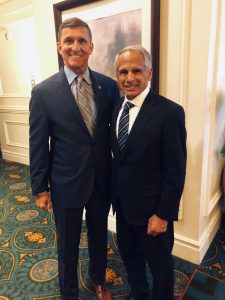 September 30, 2019 – Charleston, SC
September 30, 2019 – Charleston, SC
Dr Joseph Maroon was the Scientific Section Keynote Speaker for two days at the 13th Annual Hyperbaric Medicine Symposium in Charleston, SC, hosted by Hyperbaric Medicine International. Traditionally, the use of hyperbaric oxygen therapy (HBOT) was to help poor healing wounds and also the standard to treat the “bends” that can occur in divers and pilots. The bends, also known as decompression sickness (DCS) , occurs in scuba divers or high altitude or aerospace events when dissolved gases (mainly nitrogen) come out of solution in bubbles and can cause serious health problems. Over the last 15 years application of HBOT has expanded and its use for both PTSD and TBI has shown significantly positive results.
Both PTSD and TBI are common injuries that are diagnosed in US combat soldiers in the recent wars. HBOT researchers and numerous US military veterans and their advocates and former NFL players were also present at the meeting. Attending and providing the overall Keynote address was Michael Thomas Flynn (pictured with Dr Maroon) who is a retired United States Army Lieutenant General and advocate for veterans.
Dr. Maroon’s lectures covered a wide range of related topics and set the tone for the two days of presentations. Read below summaries of the lectures.
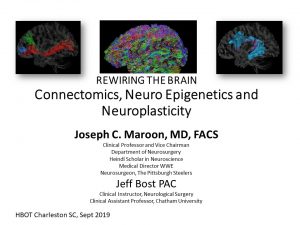 Connectomics Neuro-epigenetics and Neuroplasticity
Connectomics Neuro-epigenetics and Neuroplasticity
Neuroscience and advanced neuroimaging is now revealing that faulty brain circuits and malfunctioning connections underlie PTSD, TBI and other psychological disorders such as OCD, autism and schizophrenia. Connectomics is a new paradigm for understanding brain disease. It is the connectome, the comprehensive map of the neural elements (neurons, axons, synapses and fiber tracks), that constitutes the structural “wiring diagram” of the human brain. To use the analogy of DNA, our genome is fixed at birth but our connectome is plastic and malleable.
The malleability of our connectome to form new connections is controlled largely by environmental neuro-epigenetic factors like emotional and/or physical trauma (TBI), new learning, habits and aging that impact and regulate gene expression (but not genes themselves) through methylation and acetylation. Thus, our brain circuitry is continuously “changing” due to the constant stream of sensory input- hence, the term neuroplasticity. It is this structural and functional neuroplasticity that explains the encoding of terrifying memories and feelings in PTSD and how our neurons continue to weave themselves into new circuits-with positive or negative consequences- throughout our lives contingent on repetitive stimuli and our thoughts.
It is this same neuroplasticity, however, that provides hope to “heal” or to restore damaged brain circuits. Practitioners in the new field of restorative neurology utilize neuroepigenetic factors to modulate our brain’s neuroplasticity to induce “healthy” changes in the connectome. Restorative methods include behavior training, pharmaceuticals, eye movement desensitization and reprocessing (EMDR), physical exercise, stress reduction, diet, and innovative therapies like HBOT, virtual reality, neuro biofeedback training and magnetic and electrical modulation of the circuits regulating emotional disorders.
Novel Therapeutic Approaches to TBI and PTSD: TMS, HBO, HRV, EEG Neurofeedback, Virtual reality, Diet and Exercise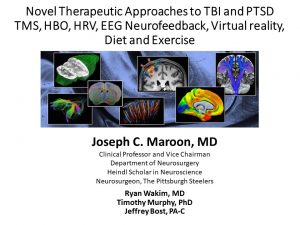
Traumatic brain injury affects several million people annually in the United States and often occurs in the context of severe ongoing stress like domestic violence and military combat. When TBI is associated with emotional trauma, post traumatic stress disorder (PTSD) may also develop. The latter is associated with, at times, severe anxiety, flashbacks, hypervigilance, insomnia and fear due to a pervasive sense of imminent threat. Specific brain pathways are implicated in the underlying pathophysiology of PTSD. Therapeutic approaches have included trauma- focused cognitive behavioral therapy, psychological intervention with and without extinction therapy, pharmacological treatment with an array of antidepressant, anxiolytic and psychostimulant drugs and eye movement desensitization and reprocessing (EMDR). Variable success is obtained with these alone. Within in the last few years several innovative therapies have become available to supplement and perhaps even replace some of these conventional treatment modalities. Dr Maroon described and illustrate some of these innovative interventions and the results thereof in the treatment for major depression and anxiety that accompanies TBI/PTSD that include the following:
• Transcranial magnetic stimulation
• Hyperbaric oxygen therapy
• Heart rate variability enhancement
• EEG neurofeedback
• Virtual reality
• Diet and exercise

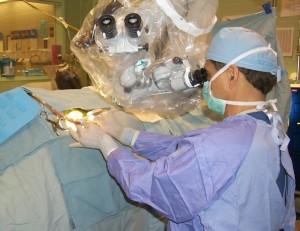
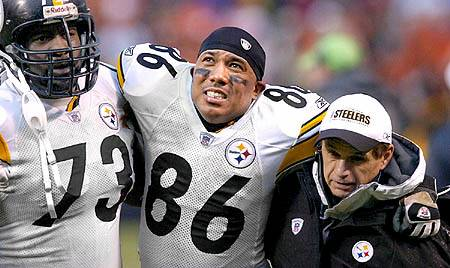

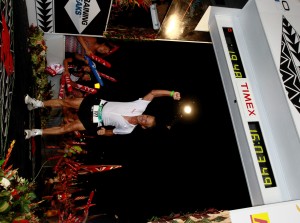 Dr. Maroon received an athletic scholarship to Indiana University in Bloomington, Indiana where as an undergraduate, he was named a Scholastic All-American in football. Dr. Maroon has successfully maintained his personal athletic interests through participation in 9 marathons and more than 72 Olympic-distance triathlon events. However, his greatest athletic accomplishment is his participation in 8 Ironman triathlons (Hawaii – 1993, 2003, 2008, 2010, 2013; Canada – 1995; New Zealand – 1997; Germany – 2000), where he usually finishes in the top 10 of his age group. Recently, in July 2012 and 2013, he finished second and third, respectively, in his age group in the Muncie, Indiana half Ironman triathlon. In October 2013 he completed his 5th World Championship Ironman in Kona, Hawaii.
Dr. Maroon received an athletic scholarship to Indiana University in Bloomington, Indiana where as an undergraduate, he was named a Scholastic All-American in football. Dr. Maroon has successfully maintained his personal athletic interests through participation in 9 marathons and more than 72 Olympic-distance triathlon events. However, his greatest athletic accomplishment is his participation in 8 Ironman triathlons (Hawaii – 1993, 2003, 2008, 2010, 2013; Canada – 1995; New Zealand – 1997; Germany – 2000), where he usually finishes in the top 10 of his age group. Recently, in July 2012 and 2013, he finished second and third, respectively, in his age group in the Muncie, Indiana half Ironman triathlon. In October 2013 he completed his 5th World Championship Ironman in Kona, Hawaii.